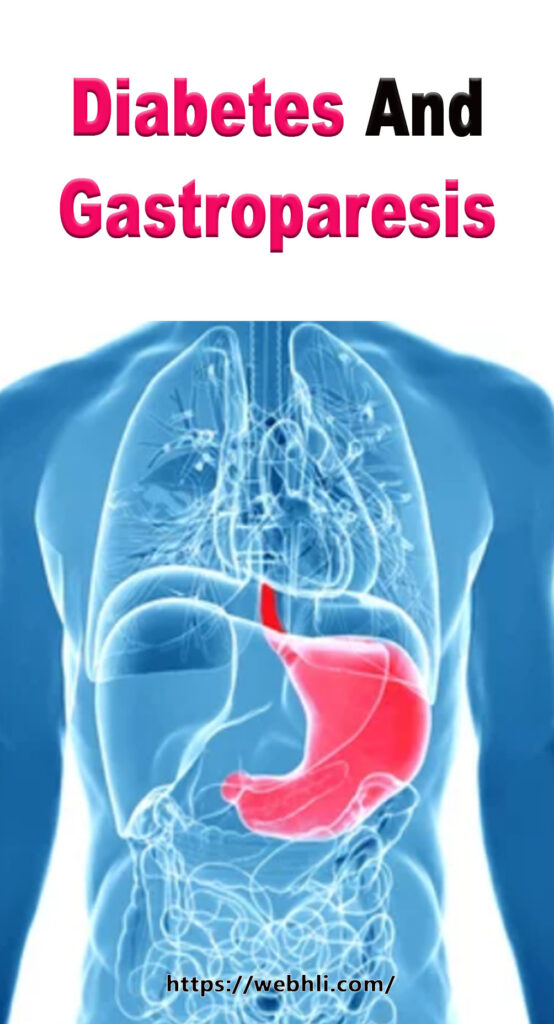
Gastroparesis is one of the common complications of Type 2 diabetes. It is actually a form of diabetic neuropathy that specifically affects a major nerve which runs from the brain to the colon called the vagus nerve. The vagus nerve is responsible for helping the body move food through the digestive system and process it properly, among other duties. When gastroparesis is present, the vagus nerve is damaged and cannot process food correctly.
Check out these related articles, too:
Control Your Diabetes Better With These Helpful Tips
Gastroparesis - A Challenge to Control
Blood Sugar Control and Diet - A Plan to Reverse Diabetes
Diabetes Natural Home Remedies – Worth a Try?
Can Magnesium Prevent Diabetes?
Zinc Shown to Promote Insulin Production In Diabetics
Prevent Side Effects From Diabetes Drugs
Why You Should Stop Taking Drugs for Your Diabetes
Problems can include symptoms of:
- nausea,
- diarrhea, or
- constipation.
Gastroparesis is translated as "stomach paralysis". This perfectly describes what is happening when the vagus nerve is damaged. Gastroparesis is caused by elevated blood sugar levels over long periods of time. As blood sugar remains elevated, it not only damages the blood vessels which supply the vagus nerve but it also damages the nerves by creating a chemical change within them.
When the body begins to experience gastroparesis food is no longer moved through the digestive tract and into the stomach as it should. Once food is in the stomach it isn't digested efficiently and in a timely manner. This means food not only takes much longer to reach the stomach, but once there, it has nowhere to go.
What can this combination of issues cause? When food is allowed to sit without being broken down, two things begin to occur. The bulky material can cause a slew of symptoms from nausea to vomiting. Second, it provides a breeding ground for bacteria to grow which can ultimately result in an infection within the digestive tract.
How is gastroparesis identified? The symptoms include nausea, bloating, abdominal pain and even heartburn, as the food pushes back up into the esophageal tract. This "full" sensation can cause a lack of appetite and as time passes, even weight loss.
The treatment for gastroparesis involves multiple steps. The first, and most important task to take care of is keeping your blood sugar levels under control as much as possible. Once the condition is present this can be rather difficult to accomplish since your food will not be digesting properly. This will naturally result in wild fluctuations in your blood sugar, making it even more difficult to achieve balanced sugar levels.
The next step involves choosing your food wisely. You want to avoid high amounts of fiber and other foods which will require more work for your body to digest. Also, stay away from foods which are not cooked thoroughly and particularly stay away from fats altogether. Eating smaller meals more frequently is another essential step to take.
Type 2 diabetes is not a condition you must just live with. You can take control of the disease, take back your health and prevent developing gastroparesis.
Good Energy Food for Diabetics
10 Simple Food Concepts Every Person Living With Diabetes Should Know
Making Cheesecake For Diabetics
Enjoy the Taste and Benefits of Diabetic Foods
Will The Mulberry Leaf Help Your Diabetes?
5 DIABETIC FRIENDLY SALADS Some Tasty
DIABETIC LEMON COCONUT COOKIES Some Tasty
50 Healthy Diabetic Recipes That Are The Best
For nearly 25 years Beverleigh Piepers has searched for and found a number of secrets to help you build a healthy body.
The answer isn't in the endless volumes of available information but in yourself.
Article Source: http://EzineArticles.com/7626817

 Protected by Patchstack
Protected by Patchstack